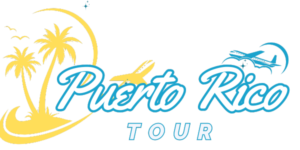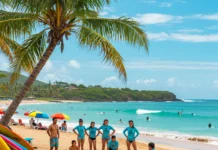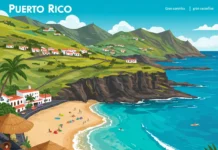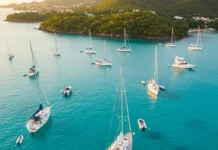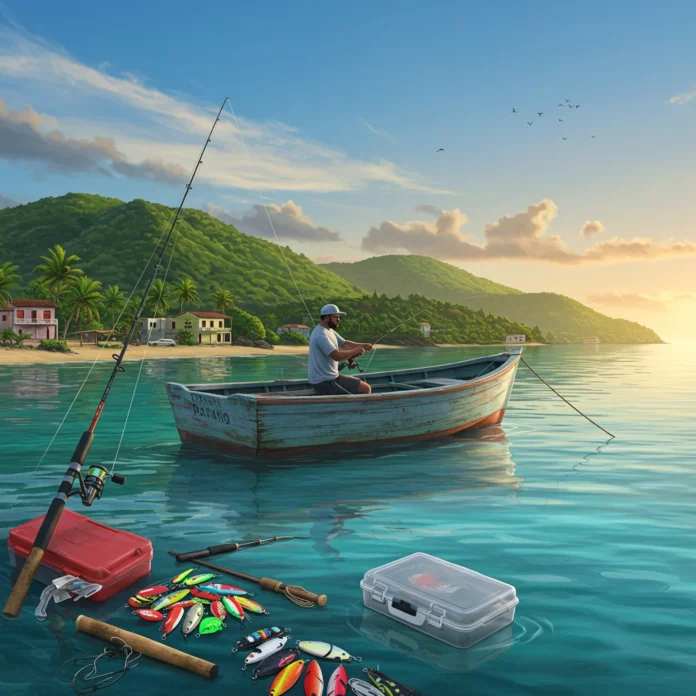Introduction: Why Puerto Rico is a Premier Fishing Destination
Puerto Rico stands out as a dream location for anglers, offering a rare combination of tropical scenery, accessible waters, and a dazzling array of fish species. The island’s coastline stretches for hundreds of miles, and its vibrant marine habitats create a paradise for both novice and seasoned fishers. With the Atlantic Ocean on one side and the Caribbean Sea on the other, the fishing options here are as diverse as the island’s landscapes.
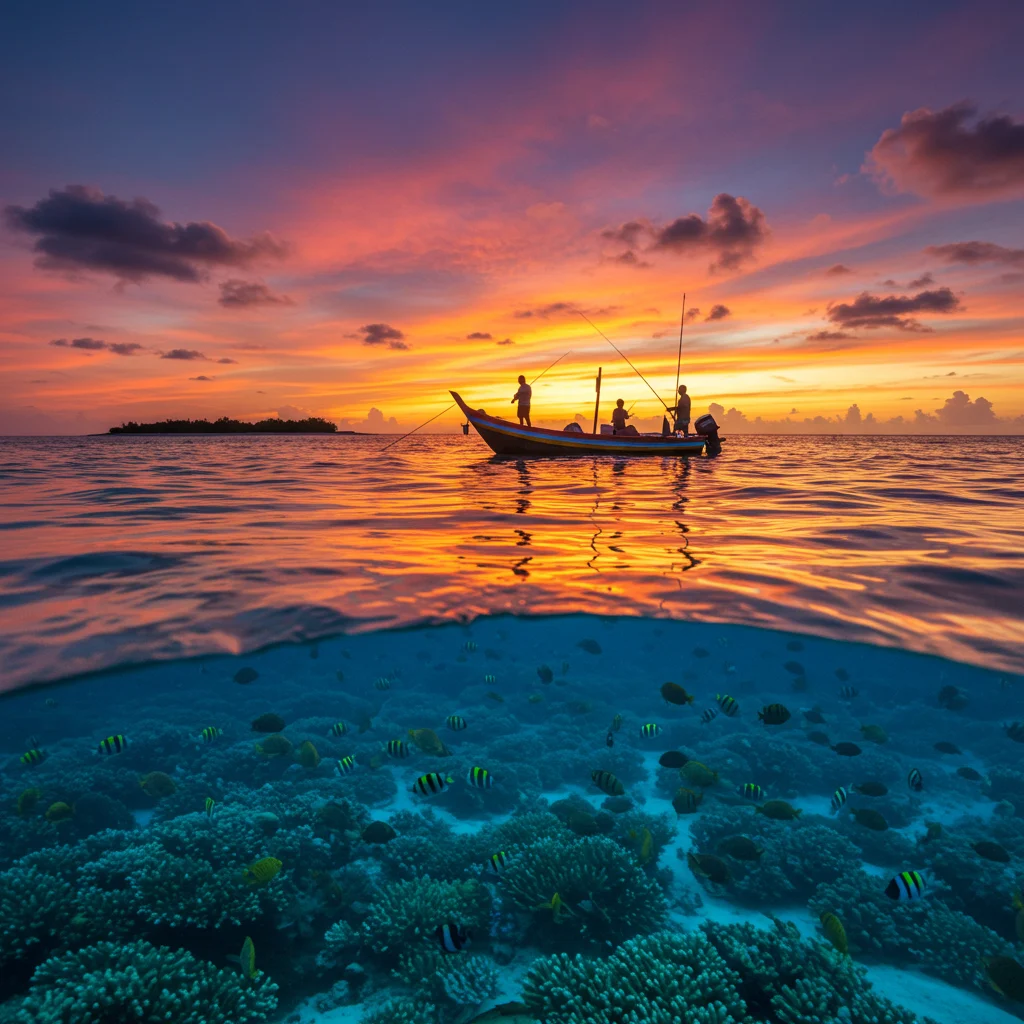
What Makes Puerto Rico Unique for Anglers?
Few places in the world offer such a variety of fishing experiences within a short drive. In Puerto Rico, we can cast lines from sandy beaches, battle giants in deep offshore waters, or slip quietly into mangrove-lined lagoons. The combination of warm water, year-round fishing seasons, and easy access to both saltwater and freshwater locations makes Puerto Rico a truly special destination for anglers.
A Brief History of Fishing in Puerto Rico
Fishing has played a central role in Puerto Rico’s culture for centuries. Indigenous Taíno communities relied on the sea for sustenance, and their traditions still echo in today’s local techniques. Over time, commercial and sport fishing both flourished, with a growing community of guides and charters welcoming visitors from around the globe. This rich history is reflected in the stories shared at docks and waterfronts across the island.
Types of Fishing Available in Puerto Rico
Puerto Rico’s diverse aquatic environments mean anglers can pursue nearly every style of fishing imaginable. From high-adrenaline deep sea excursions to peaceful freshwater outings, there’s something for every preference and skill level.
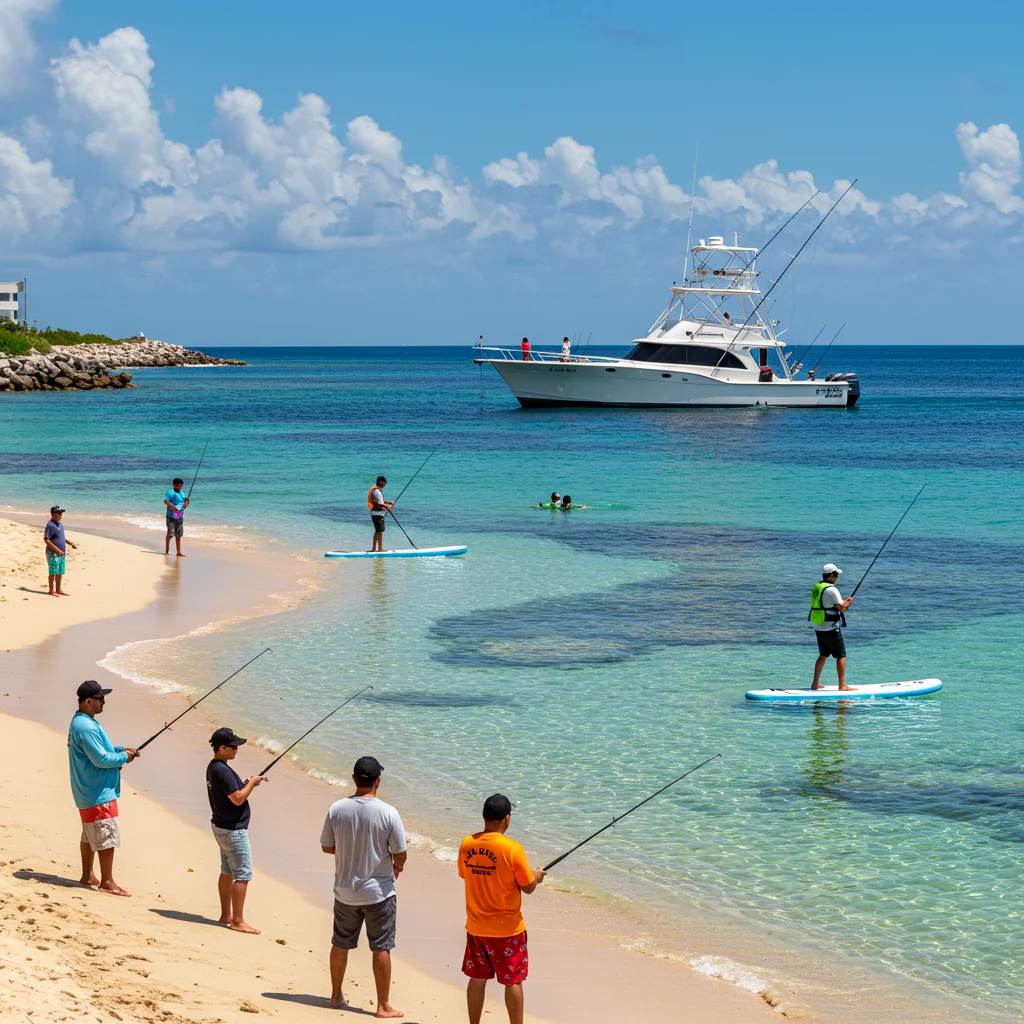
Saltwater Fishing: Opportunities and Challenges
Saltwater fishing is the backbone of Puerto Rican angling. The island’s coral reefs, bays, and open ocean provide habitats for an impressive list of game fish. While the opportunities are abundant, changing currents and weather patterns can sometimes test even experienced anglers. Local guides are invaluable for learning the nuances of these waters.
Freshwater Fishing in Puerto Rico
While saltwater often gets the spotlight, Puerto Rico also offers excellent freshwater fishing. Its lakes and rivers are home to peacock bass, largemouth bass, and tarpon. These peaceful settings invite a slower pace, with mist rising off the water at dawn and the sounds of tropical birds overhead.
Deep Sea Fishing Adventures
For those seeking big-game thrills, deep sea fishing is a top choice. The drop-offs near Puerto Rico’s coast bring pelagic species within easy reach. Anglers often return with stories of mahi-mahi, wahoo, and even marlin. You can find more details about this exhilarating pursuit in our article on Puerto Rico’s best offshore angling experiences.
Inshore vs. Offshore Fishing: What’s the Difference?
Understanding the distinction between inshore and offshore fishing can help us plan the perfect trip. Inshore fishing typically takes place within a few miles of the coast, targeting species like tarpon, snook, and snapper. Offshore, we head into deeper waters for larger pelagics and billfish, often using heavier gear and specialized tactics.
Fly Fishing in Puerto Rico: Is It Possible?
Yes, fly fishing is not only possible but increasingly popular in Puerto Rico. Shallow flats, lagoons, and river mouths offer ideal conditions for casting to bonefish, tarpon, and snook. Local guides can provide specialized equipment and invaluable insight into the island’s most productive fly fishing spots.
Top Fish Species to Catch in Puerto Rico
Puerto Rico’s waters host an impressive lineup of sought-after game fish. Each species comes with its own set of challenges and rewards, making every outing a unique adventure.

Tarpon: The Silver King
The mighty tarpon is a bucket-list catch for many anglers. Known for their acrobatics and explosive runs, these fish haunt both saltwater lagoons and river mouths, especially during the early morning hours. Landing a tarpon is an unforgettable experience, with the fish’s metallic scales glinting in the tropical sun.
Snook: Techniques for Success
Snook require a blend of finesse and patience. They lurk near mangroves, docks, and rocky outcrops, ambushing baitfish. Using live bait or soft plastic lures often yields the best results, particularly at dawn or dusk when snook are most active.
Mahi-Mahi: How to Land a Trophy
Few fish rival the beauty and excitement of mahi-mahi. Their electric colors flash beneath the surface, and their aerial displays can leave us awestruck. Trolling with brightly colored lures or live bait near floating debris is a proven method for enticing these fast-moving predators.
Wahoo and Tuna: Offshore Prizes
Wahoo and tuna are prime targets for offshore trips. Wahoo are prized for their speed and razor-sharp teeth, while tuna offer powerful, sustained runs. Both species are commonly caught while trolling in deep waters, where the ocean’s blue expanse meets the horizon.
Billfish: Marlin and Sailfish Hotspots
Marlin and sailfish represent the ultimate offshore challenge. These giants test gear and determination, with battles that can last hours. San Juan and Fajardo are top launching points for billfish expeditions, drawing anglers from around the world.
Other Notable Species: Snapper, Grouper, and More
In addition to headline species, Puerto Rico’s reefs and wrecks hold abundant snapper, grouper, jacks, and barracuda. These fish provide steady action and delicious table fare, making them favorites for family outings and relaxed days on the water.
Best Fishing Spots in Puerto Rico
From bustling city harbors to secluded island coves, Puerto Rico offers fishing locations to suit every mood and style. Each region brings its own flavor and unique opportunities.

San Juan: Urban Fishing and Beyond
San Juan is more than just a historic city; it’s also a hub for inshore and offshore fishing. The city’s marinas provide quick access to deep water, and local guides know the best places to target tarpon, snook, and billfish. For those interested in guided excursions, our post about San Juan fishing charters highlights top-rated options.
Fajardo: The Gateway to the East
Fajardo sits on Puerto Rico’s eastern tip, serving as a launchpad to renowned offshore grounds and the Spanish Virgin Islands. Its protected bays and reefs offer prime settings for both inshore and bluewater pursuits, surrounded by striking natural beauty.
La Parguera: Mangroves and Marine Life
La Parguera is celebrated for its intricate mangrove channels and vibrant marine ecosystems. Kayak anglers and fly fishers are drawn to its calm waters, where tarpon and snook patrol the shallows. The area offers a peaceful alternative to busier coastal towns.
Cabo Rojo: Southwestern Secrets
The southwest coast, anchored by Cabo Rojo, is a haven for those seeking less-traveled waters. Its rocky outcrops, reefs, and flats support a variety of species, and the sunsets here are nothing short of breathtaking.
Vieques and Culebra: Island Escapes
The offshore islands of Vieques and Culebra offer secluded beaches and uncrowded fishing grounds. Here, the pace slows, and anglers can enjoy turquoise waters teeming with bonefish, tarpon, and snapper. These islands are accessible by ferry or small plane, making them a favorite for longer fishing getaways.
Rivers and Lakes: Freshwater Gems
Puerto Rico’s interior is dotted with lush rivers and serene lakes. These freshwater gems provide excellent opportunities for bass, tilapia, and even tarpon. Early mornings often bring misty vistas and the gentle sounds of the forest waking up.
Hidden Local Hotspots Only Insiders Know
Some of Puerto Rico’s most productive fishing spots are known only to locals. Small coves, secret reef patches, and overlooked river mouths yield exceptional catches for those willing to seek them out. Hiring a local guide or chatting with fishermen at the docks can unlock these hidden treasures.
Fishing Seasons in Puerto Rico: When Is the Best Time to Go?
While fishing is possible year-round, certain times of year offer peak action for specific species. Understanding seasonal patterns helps us plan the most rewarding trips.
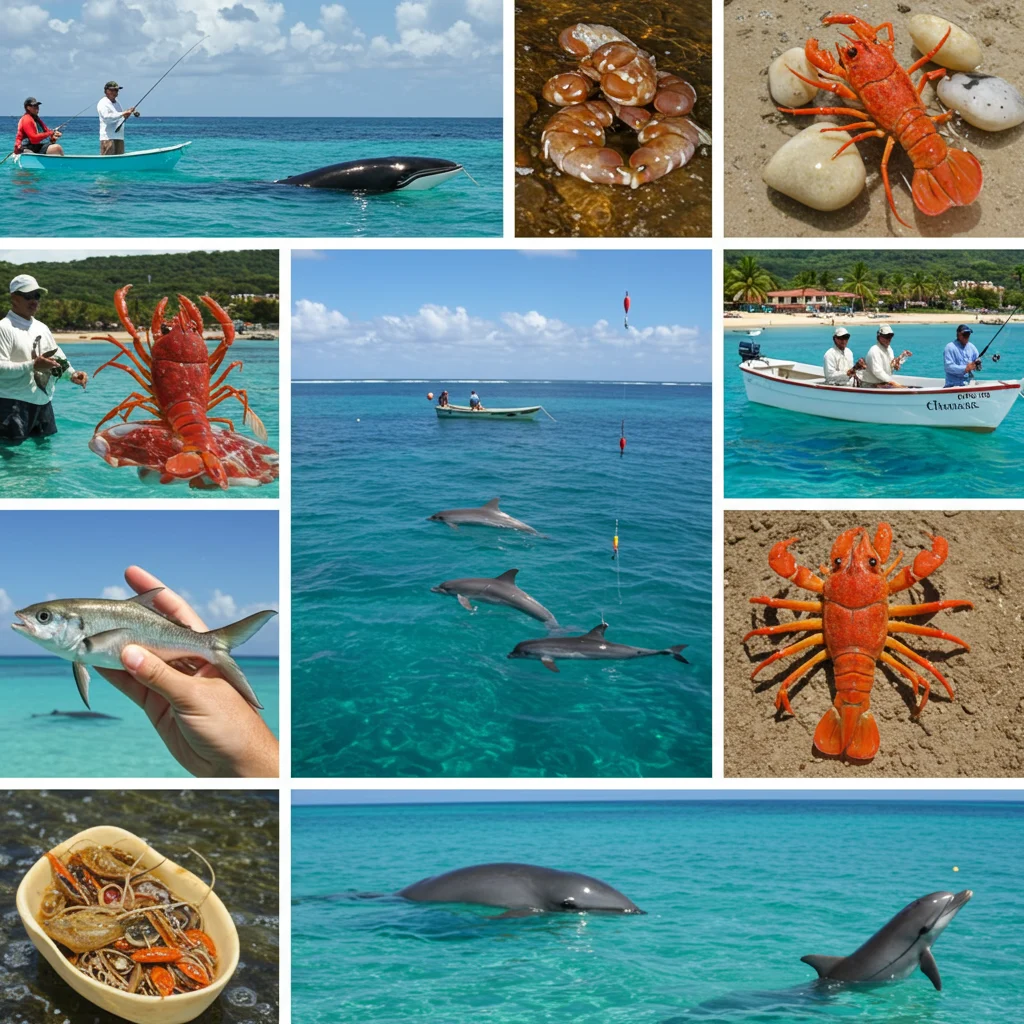
Peak Seasons for Popular Species
The peak season for tarpon runs from late spring through early fall, while mahi-mahi and wahoo are most abundant from March to June. Billfish action heats up in the summer, drawing international tournament crowds. For those seeking variety, winter brings a steady supply of snapper and grouper.
Weather Patterns and Their Impact on Fishing
Puerto Rico’s tropical climate means warm temperatures year-round, but weather can shift quickly. Summer brings occasional storms, while winter is drier and more predictable. Monitoring forecasts and speaking with local captains helps us make the most of changing conditions.
Tide and Moon Phase Considerations
Tides and moon phases have a significant influence on fish behavior. Many local anglers prefer to fish around new or full moons, when tidal swings are greatest and fish are most active. Planning trips around these cycles can increase our chances of success.
Essential Gear for Fishing in Puerto Rico
Having the right equipment can make or break a fishing trip. The tropical climate, strong fish, and diverse habitats all call for thoughtful packing and preparation.
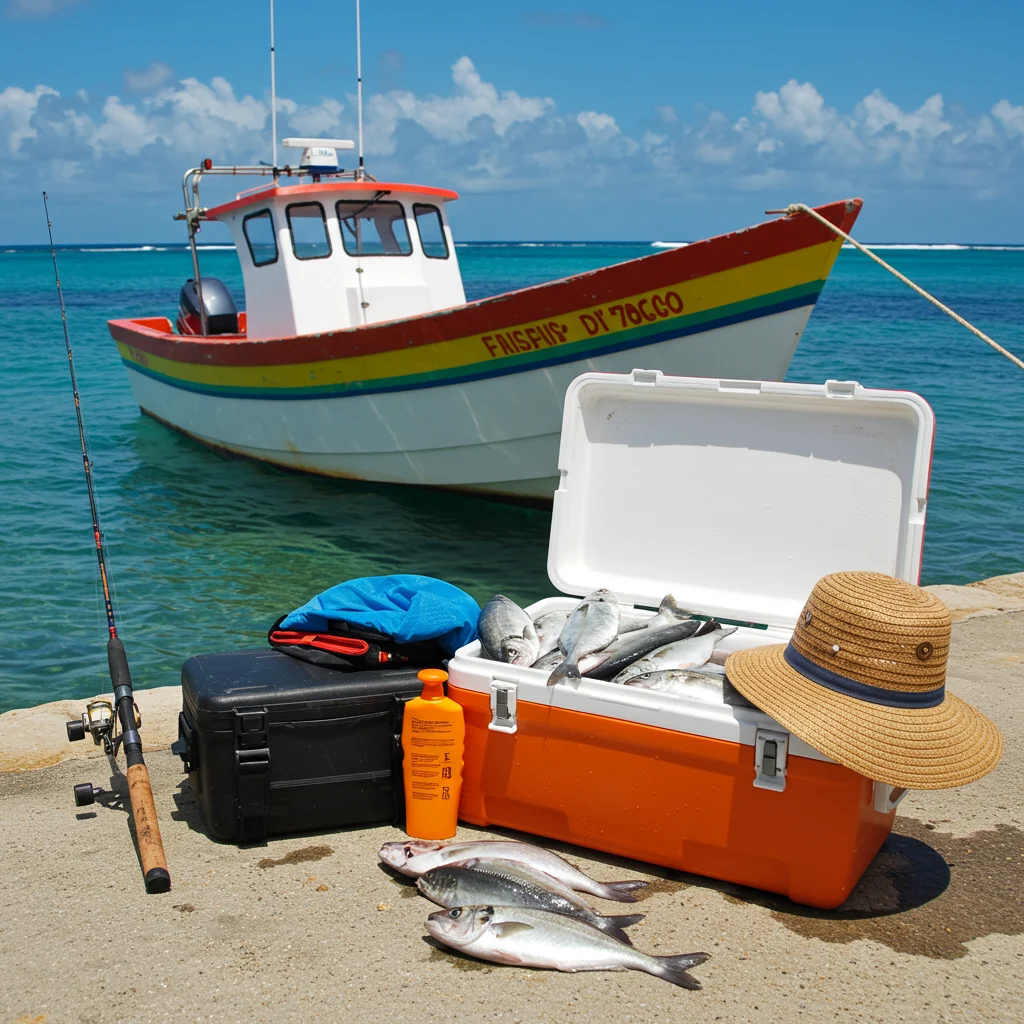
Rods, Reels, and Tackle Recommendations
We recommend bringing a selection of medium to heavy-action rods and sturdy reels, especially for offshore or big game species. Inshore fishing can often be enjoyed with lighter gear. A well-stocked tackle box with a range of lures and terminal tackle increases flexibility on the water.
What Bait Works Best in Puerto Rican Waters?
Live bait such as pilchards, mullet, and shrimp often produce outstanding results in both saltwater and freshwater environments. Artificial lures—plugs, jigs, and soft plastics—are popular for targeting aggressive predators like tarpon and snook. Matching bait to the local forage is the key to consistent action.
Clothing and Sun Protection Tips
Packing lightweight, moisture-wicking clothing is essential in Puerto Rico’s heat. A wide-brimmed hat, polarized sunglasses, and high-SPF sunscreen provide crucial protection from the sun. Quick-drying shoes and a buff or neck gaiter help keep us comfortable during long days outdoors.
Electronics and Gadgets for the Modern Angler
Modern electronics can enhance our fishing experience. Portable GPS units, fish finders, and waterproof cameras are popular tools. Many local charters provide advanced equipment, but bringing our own devices ensures we capture every memorable moment.
Charter Fishing in Puerto Rico: What to Expect
Booking a charter fishing trip is one of the best ways to maximize your time on the water. Local captains offer expert guidance, quality equipment, and invaluable knowledge of the island’s hotspots.
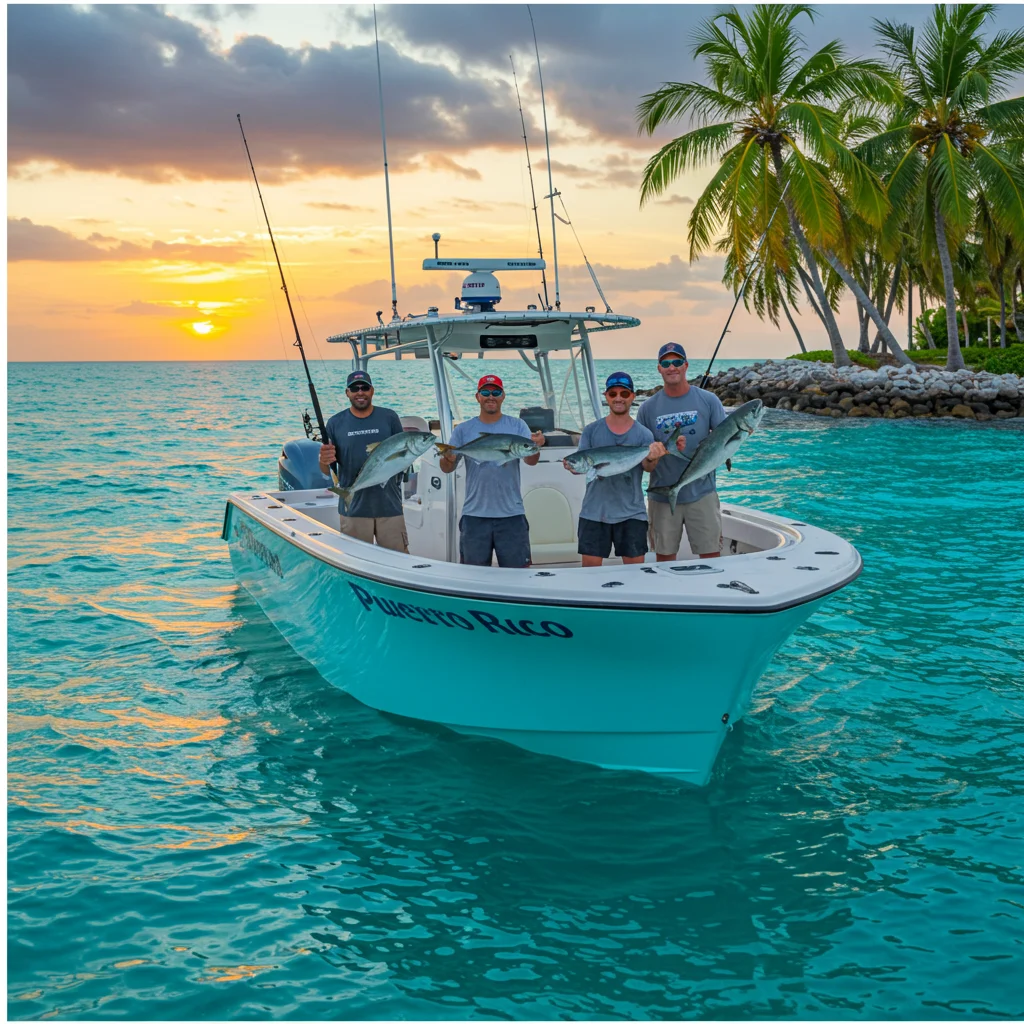
How to Choose the Right Charter Company
When selecting a charter, we look for experienced captains, well-maintained boats, and positive reviews from other anglers. Asking about target species, gear included, and safety protocols can help narrow down the best options. For a comprehensive overview, our article on Puerto Rico fishing charters offers valuable guidance.
Private vs. Shared Charters: Which Is Best for You?
Private charters provide personalized service and flexibility but come at a higher cost. Shared trips are more affordable and offer the chance to meet fellow anglers. Both options deliver memorable experiences, so the choice depends on your group size and preferences.
What’s Included in a Typical Charter Trip?
Most charters include tackle, bait, licenses, and refreshments. Some also provide transportation to and from the dock. Clarifying what’s covered in advance helps us avoid surprises and ensures a smooth experience.
Questions to Ask Before Booking
Before confirming a charter, we recommend asking about:
- Target species and typical catch rates
- Boat amenities and safety features
- Cancellation and weather policies
- Experience level required
DIY Fishing: Exploring Puerto Rico on Your Own
Independent anglers will find Puerto Rico welcoming and accessible. With a little planning, we can enjoy rewarding fishing adventures without a guide or charter.
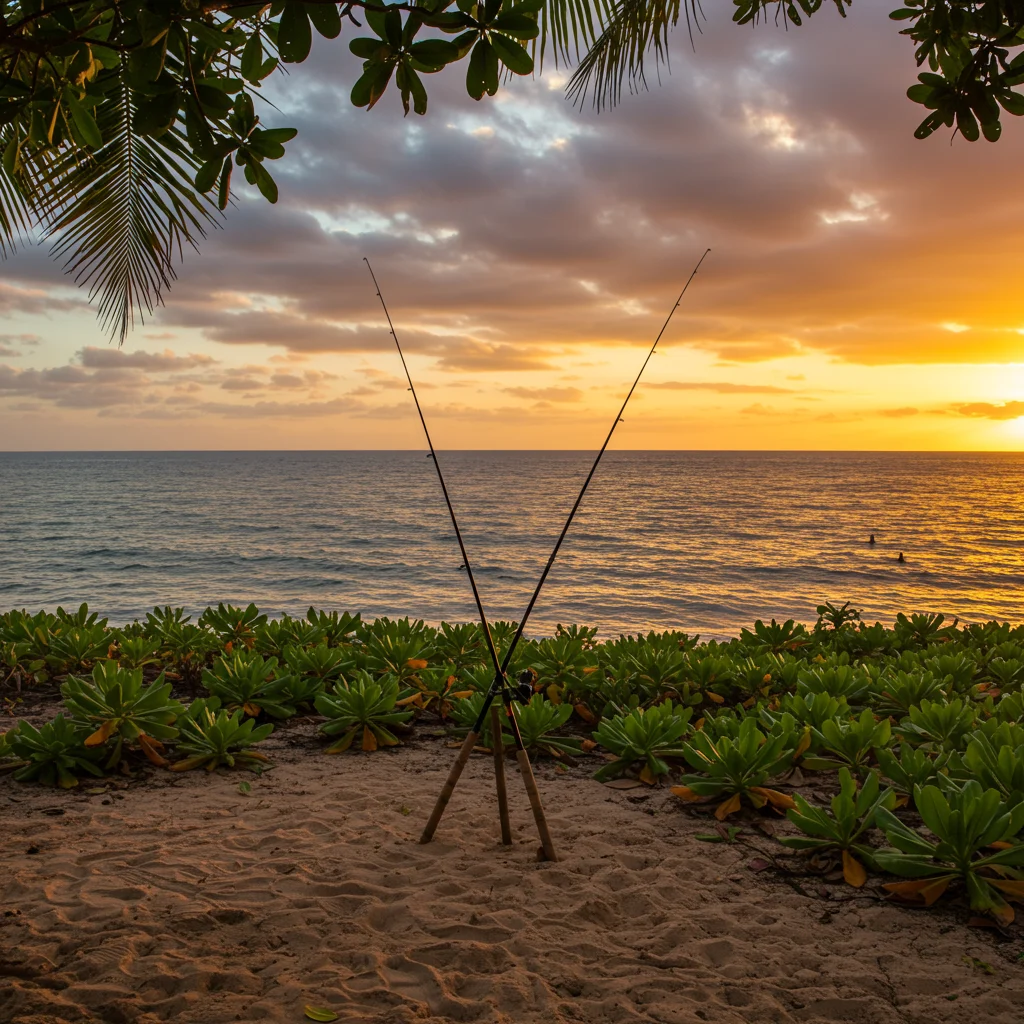
Best Shore Fishing Locations
Many beaches, piers, and rocky points offer excellent shore fishing. San Juan’s Condado Lagoon, Fajardo’s coastline, and the beaches near Cabo Rojo are all reliable spots. Early mornings and evenings are often most productive when fish move closer to shore.
Kayak and Paddleboard Fishing Opportunities
Kayaks and paddleboards open up quiet lagoons, mangroves, and shallow flats that are inaccessible by powerboat. These stealthy crafts allow us to approach wary fish and enjoy peaceful, scenic settings. Rental shops in tourist hubs make it easy to get started.
Renting vs. Bringing Your Own Gear
Most visitors choose to rent gear from local shops, which provide rods, reels, and tackle suited to the area. Bringing our own equipment is possible, but we should check airline restrictions and pack carefully to avoid damage in transit.
Rules, Regulations, and Fishing Licenses
Understanding and respecting local regulations is essential for a positive fishing experience. Puerto Rico’s rules help preserve healthy fisheries and protect sensitive habitats.
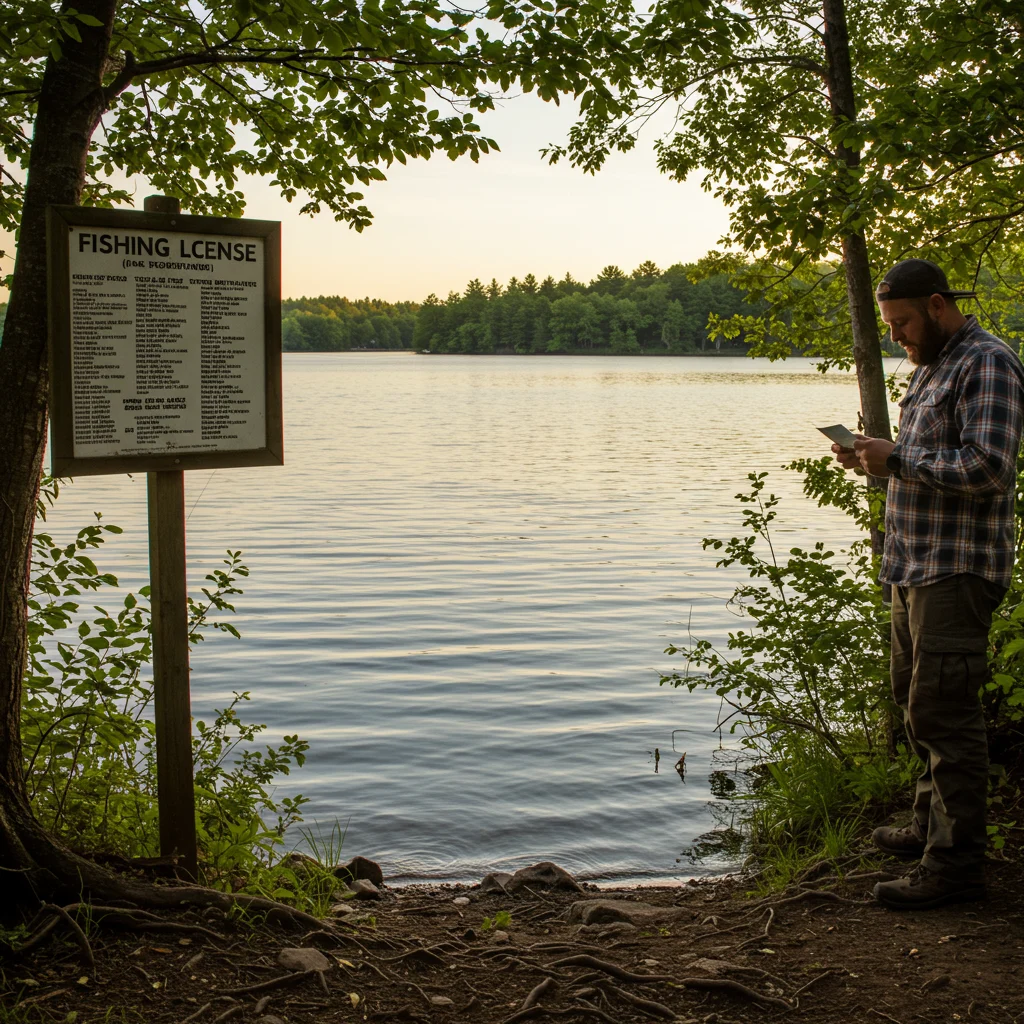
Do You Need a Fishing License in Puerto Rico?
Licensing requirements vary depending on the type of fishing. While many saltwater locations do not require a license for recreational anglers, freshwater fishing usually does. Always verify current regulations before your trip, as rules can change without notice.
Bag Limits and Size Restrictions Explained
Bag and size limits are in place for many species, including snapper, grouper, and tarpon. These restrictions help maintain healthy populations and ensure future generations can enjoy the same opportunities. Local guides and tackle shops are excellent resources for up-to-date information.
Protected Areas and Conservation Zones
Puerto Rico boasts several marine reserves and conservation zones where fishing is restricted or prohibited. These areas support biodiversity and help replenish nearby fisheries. Maps and signage are usually clear, but when in doubt, we ask local authorities for guidance.
Respecting Local Customs and Etiquette
Politeness and respect go a long way when fishing in Puerto Rico. Greeting other anglers, practicing “catch and release” where appropriate, and cleaning up after ourselves all contribute to a positive atmosphere on the water.
Insider Secrets: Tips from Local Anglers
Local knowledge can make the difference between a good day and a legendary one. Puerto Rican anglers are generous with their advice, often sharing tips with visitors who show interest and respect.
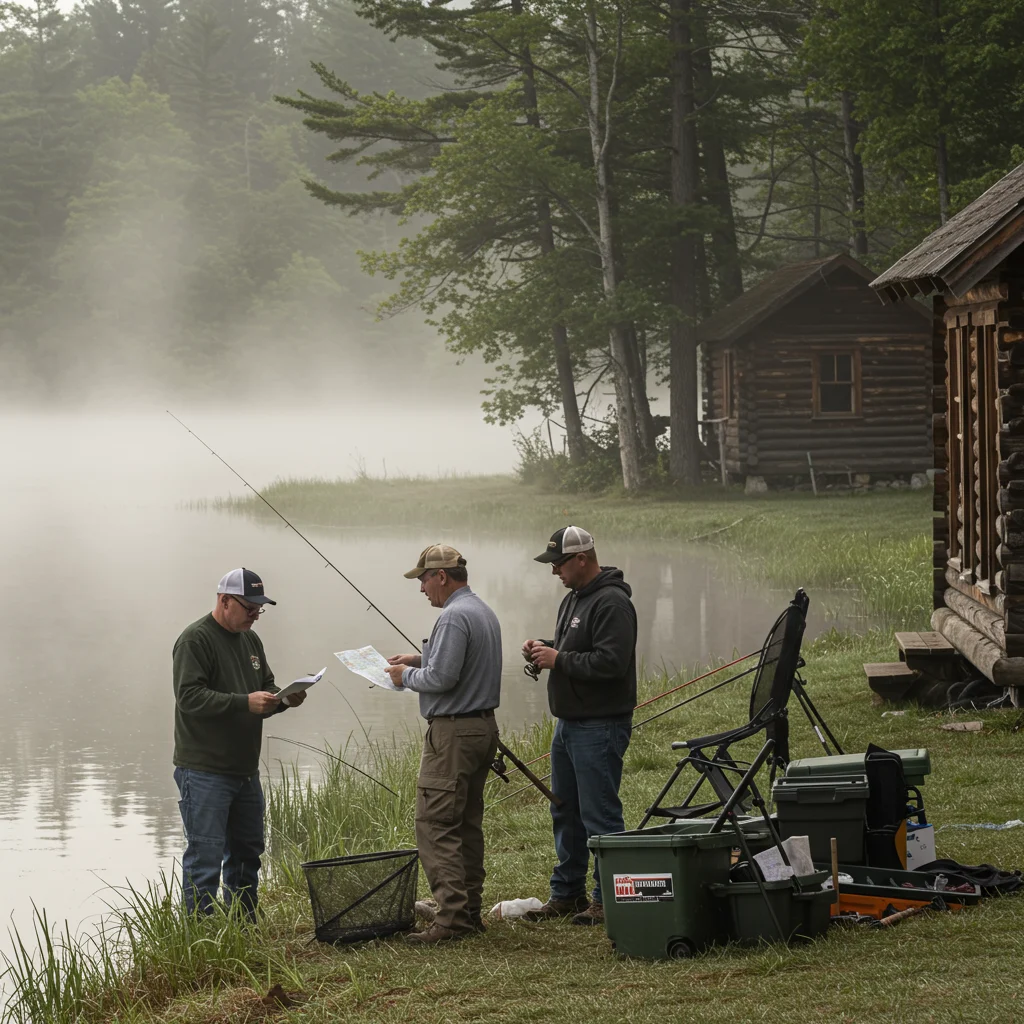
Best Times of Day to Fish
Early mornings and late afternoons are prime times, especially for inshore and freshwater species. The low light and cooler temperatures encourage fish to feed more aggressively, while the golden sunrise or sunset adds to the experience.
How to Read Puerto Rican Waters Like a Pro
Observing subtle changes in water color, current, and bird activity can help us locate feeding fish. Learning to read the signs—like baitfish jumping or pelicans diving—takes practice but pays off with bigger and more frequent catches.
Secret Baits and Lures Locals Swear By
While live bait is always effective, many locals have favorite artificial lures that consistently produce results. Soft plastics in natural colors, topwater plugs at dawn, and silver spoons for fast-moving predators are all staples in the local tackle box. As experts often say:
“Success in fishing comes not from the fanciest gear, but from understanding the water and respecting its rhythm.”
Avoiding Common Mistakes as a Visiting Angler
Newcomers sometimes overlook local regulations or underestimate the strength of tropical sun and currents. Taking time to prepare, pack properly, and listen to local advice helps us avoid mishaps and enjoy a safe, productive trip. For more in-depth insider knowledge, see our dedicated post on Puerto Rico fishing tips.
Fishing for Families: Making It Fun for Everyone
Puerto Rico is a fantastic destination for family fishing adventures. With plenty of accessible locations and a welcoming culture, families can create lasting memories on the water.
Kid-Friendly Fishing Spots
Piers, sheltered bays, and shallow lagoons offer safe environments for children to try fishing. Many local guides specialize in family trips, providing patient instruction and all the necessary gear.
Safety Tips for Family Fishing Trips
We always prioritize safety by ensuring everyone wears properly fitted life jackets, stays hydrated, and uses sun protection. Keeping a first aid kit and emergency contact information on hand provides extra peace of mind.
Combining Fishing with Other Family Activities
Puerto Rico’s fishing spots are often near beautiful beaches, nature reserves, and family-friendly attractions. It’s easy to combine a morning of fishing with an afternoon of swimming, snorkeling, or exploring local markets.
Sustainable and Responsible Fishing Practices
Preserving Puerto Rico’s exceptional fisheries is a shared responsibility. Practicing ethical fishing ensures a bright future for both the environment and the angling community.
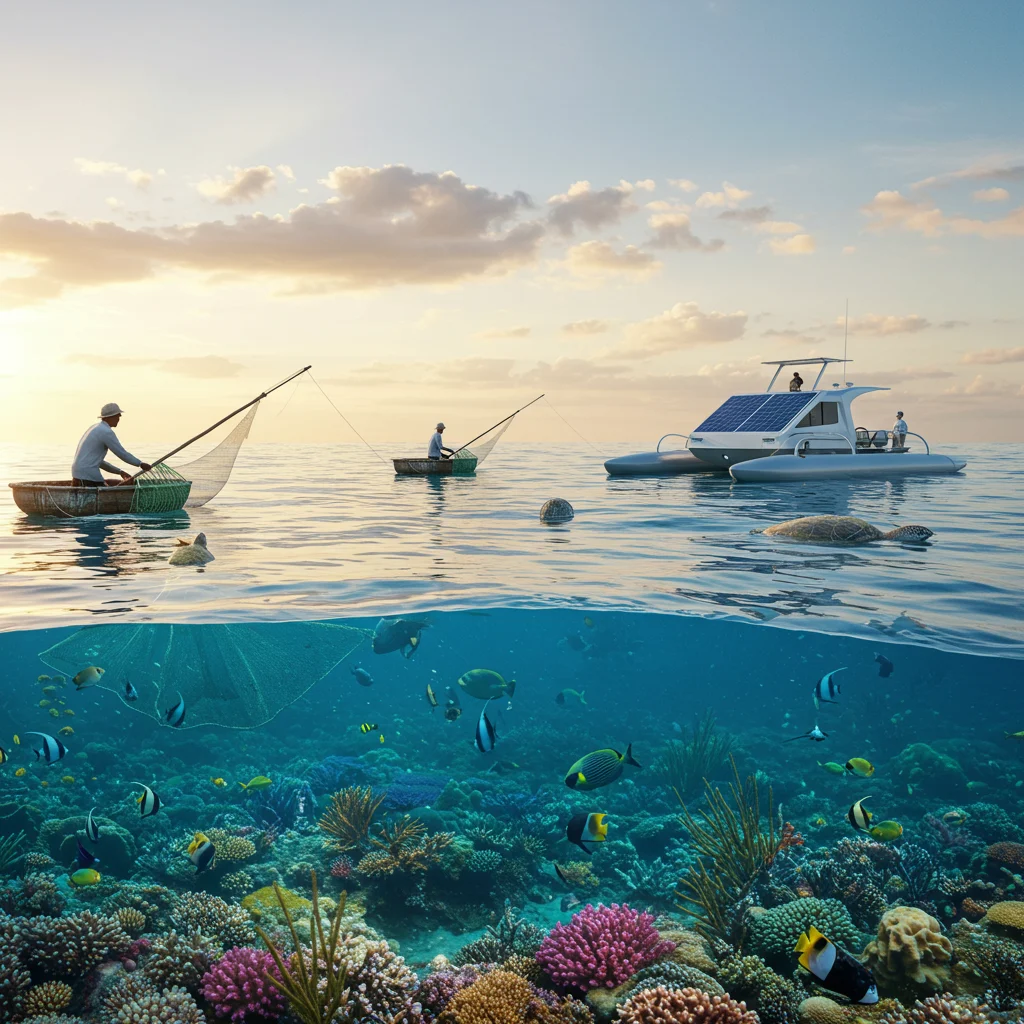
Catch and Release: Best Practices
When practicing catch and release, we use barbless hooks, handle fish gently, and minimize air exposure. Returning fish to the water quickly and safely increases their chances of survival.
Supporting Local Conservation Efforts
Many organizations in Puerto Rico work to restore habitats and educate anglers. Supporting these efforts—through donations, volunteering, or simply spreading awareness—multiplies the positive impact of our visits.
Minimizing Your Environmental Impact
We pack out all trash, avoid disturbing sensitive habitats, and use eco-friendly products when possible. Small actions, like picking up litter or using biodegradable fishing line, help keep Puerto Rico’s waters pristine for future generations.
Fishing Events and Tournaments in Puerto Rico
The island’s active angling community hosts a range of fishing events throughout the year. These gatherings offer excitement, camaraderie, and the chance to compete for prizes and bragging rights.
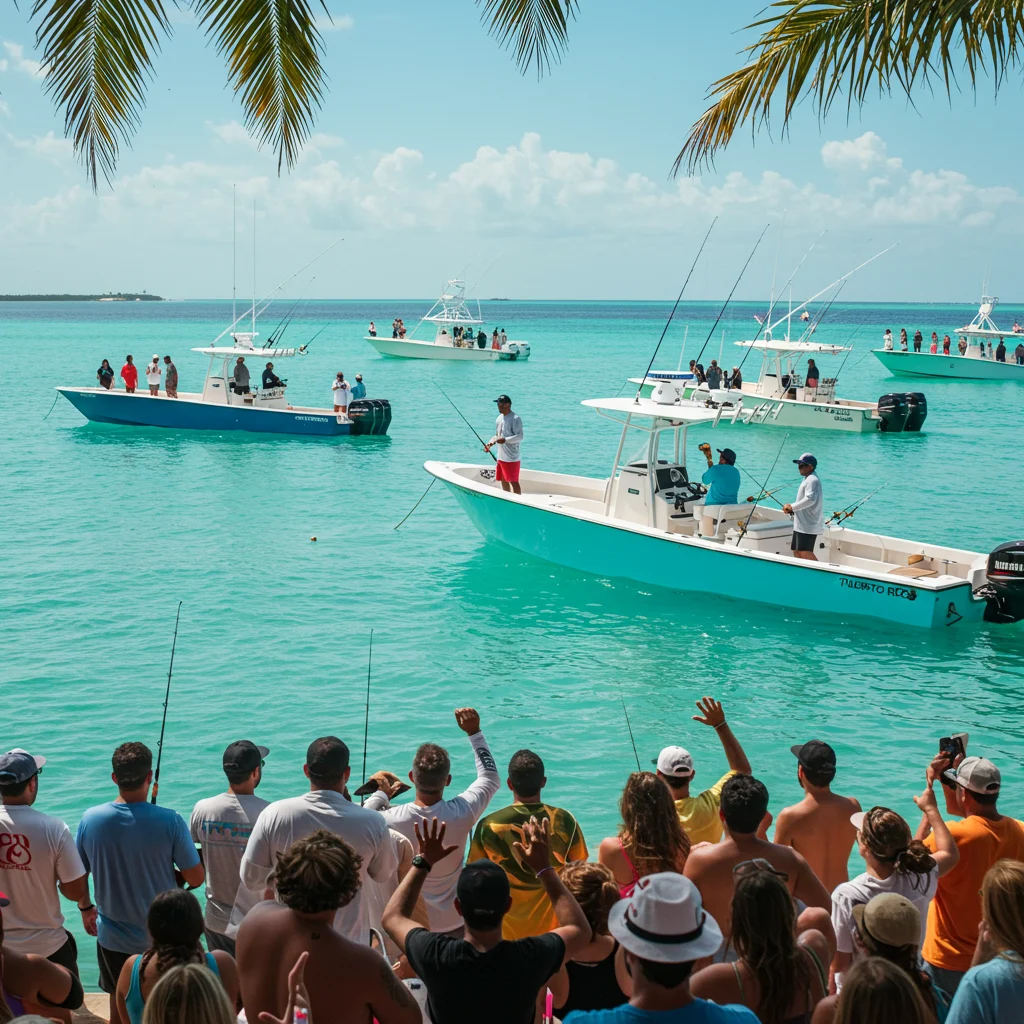
Annual Billfish Tournaments
Puerto Rico is famous for its billfish tournaments, which attract top anglers from around the world. These events, often held in San Juan and Fajardo, showcase the island’s world-class offshore fishing and festive spirit.
Community Fishing Festivals
Local fishing festivals combine friendly competition with music, food, and cultural celebrations. They provide a wonderful opportunity to connect with Puerto Rican traditions and meet fellow anglers.
How to Register and Participate
Most tournaments and festivals welcome visitors, with registration details available online or at local marinas. Signing up early and reviewing event rules ensures a smooth and enjoyable experience.
Planning Your Puerto Rico Fishing Trip
Successful fishing adventures begin with thoughtful planning. From travel arrangements to packing lists, a little preparation goes a long way toward a smooth and rewarding experience.
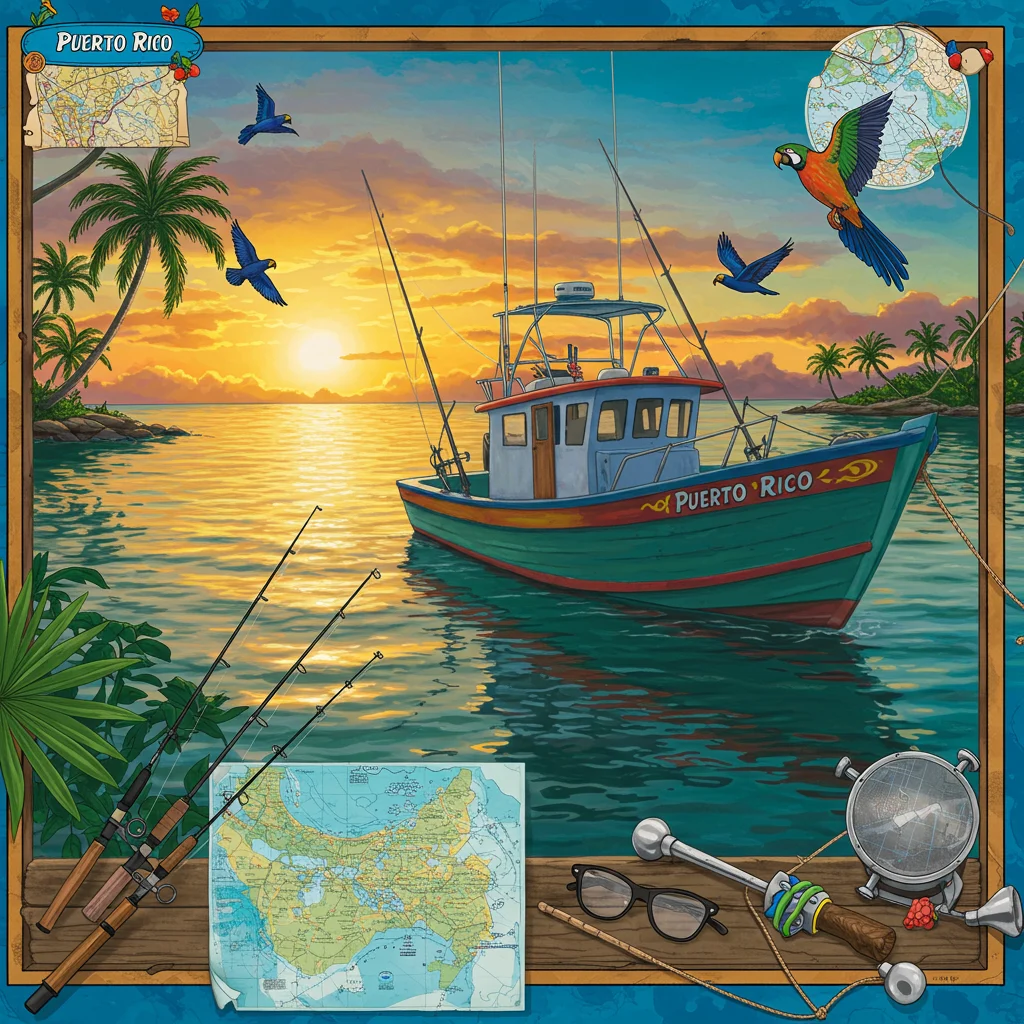
Travel and Accommodation Options for Anglers
Puerto Rico’s major airports and highways make it easy to reach top fishing destinations. Coastal hotels, guesthouses, and vacation rentals cater to anglers, often offering secure storage for gear and close proximity to marinas.
Packing Tips for a Fishing Vacation
We recommend packing light, breathable clothing, rain gear, and all necessary fishing equipment. Don’t forget chargers for electronics, spare sunglasses, and a waterproof bag for valuables.
Budgeting for Your Trip
Costs can vary widely depending on the type of fishing, choice of charter, and accommodations. Setting a budget in advance and exploring package deals can help keep expenses in check while maximizing value.
What to Do When Not Fishing: Exploring Puerto Rico
Puerto Rico’s appeal extends far beyond the water. When not fishing, we can experience the island’s vibrant culture, stunning scenery, and mouthwatering cuisine.

Must-See Sights Near Top Fishing Spots
Historic Old San Juan, El Yunque National Forest, and the bioluminescent bays are just a few must-visit attractions near major fishing hubs. Exploring these sites adds depth and variety to any fishing trip.
Local Cuisine: Where to Eat Your Catch
Many restaurants near marinas will cook your fresh catch, serving it with classic Puerto Rican sides like mofongo and tostones. Sharing a meal of just-caught fish, seasoned with local spices, is a highlight for many visitors.
Cultural Experiences for Anglers
We recommend taking time to enjoy live music, art galleries, and local festivals. These experiences enrich our understanding of Puerto Rico’s heritage and provide a welcome balance to days spent on the water. For those interested in safety and travel logistics, our article on San Juan’s deep sea fishing secrets includes helpful travel tips for anglers.
Frequently Asked Questions About Puerto Rico Fishing
We hear many common questions from first-time visitors planning a fishing trip to Puerto Rico. Here are clear, concise answers to help prepare for your adventure.
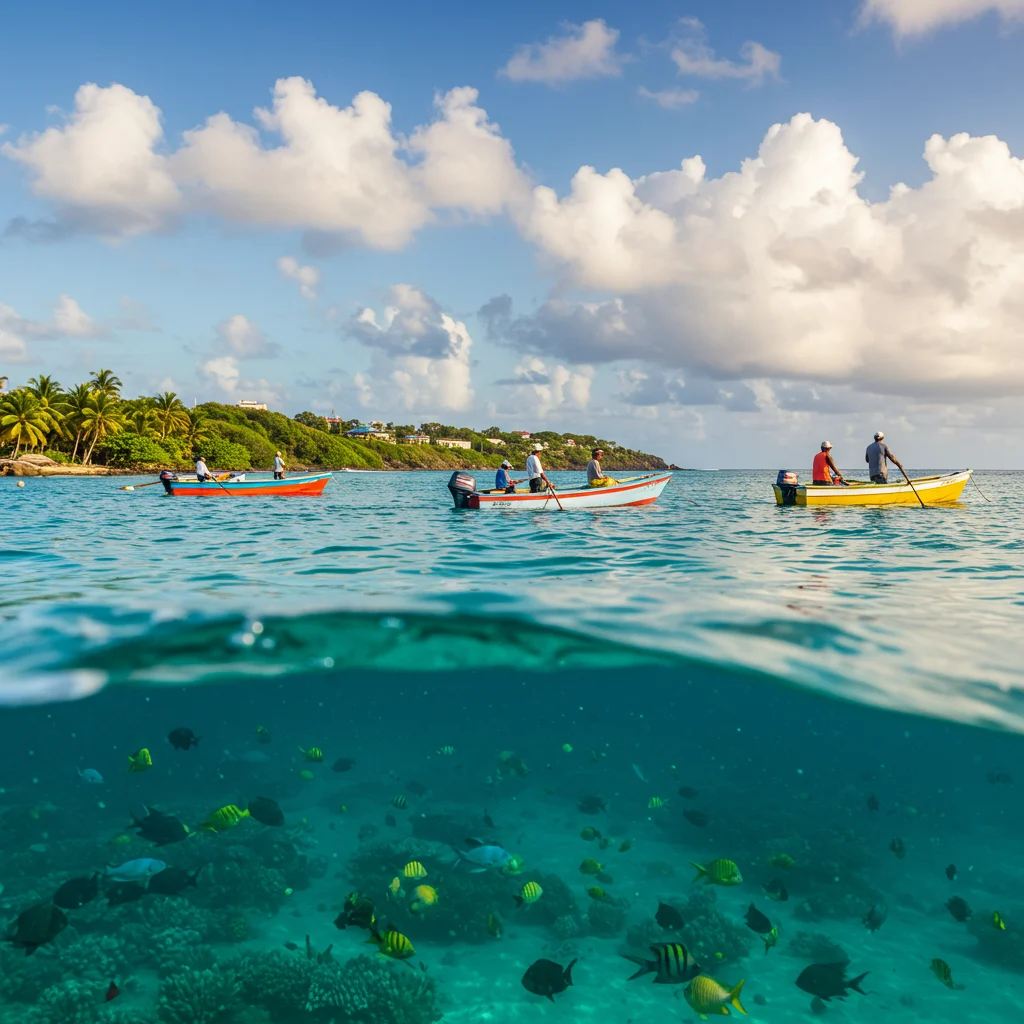
Is Puerto Rico Safe for Anglers and Tourists?
Puerto Rico is generally safe for visitors, with vibrant tourist areas and a welcoming local community. As with any destination, we recommend using common sense, securing valuables, and following local advice for a worry-free trip.
Can You Bring Your Own Fishing Gear on a Plane?
Yes, you can bring rods, reels, and tackle as checked luggage on most airlines. It’s important to pack gear securely and review your airline’s specific policies on sporting equipment before traveling.
How Do You Ship Your Catch Home?
Shipping fish home is possible, but regulations and logistics can be complex. Many charters offer filleting and packaging services, and some can arrange overnight shipping. Always check import rules for your home country before making plans.
Conclusion: Why Puerto Rico Should Be Your Next Fishing Adventure
Puerto Rico offers an unrivaled blend of diverse fishing opportunities, breathtaking scenery, and warm hospitality. Whether you dream of battling a trophy marlin offshore, casting for tarpon at sunrise, or sharing a beachside meal with family, this island delivers unforgettable moments for anglers of all backgrounds.

For those ready to plan their ultimate fishing getaway, we recommend starting with the trusted resources and local expertise provided by Puerto Rico Tour. With careful planning and an adventurous spirit, your Puerto Rican fishing adventure is sure to be one for the record books.
